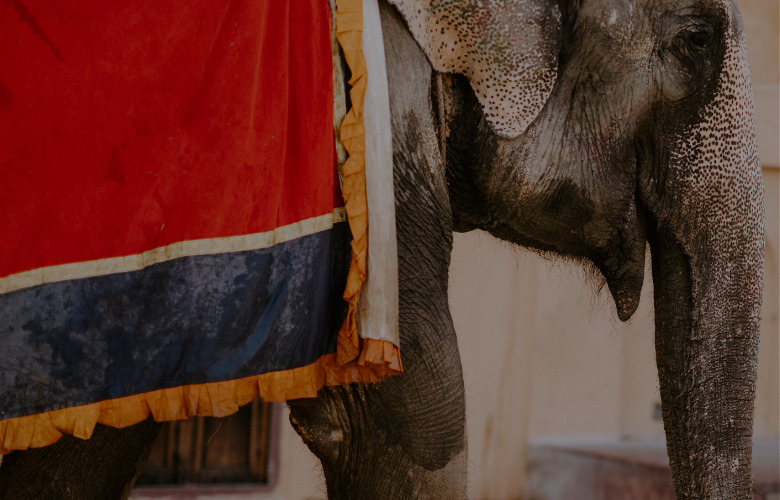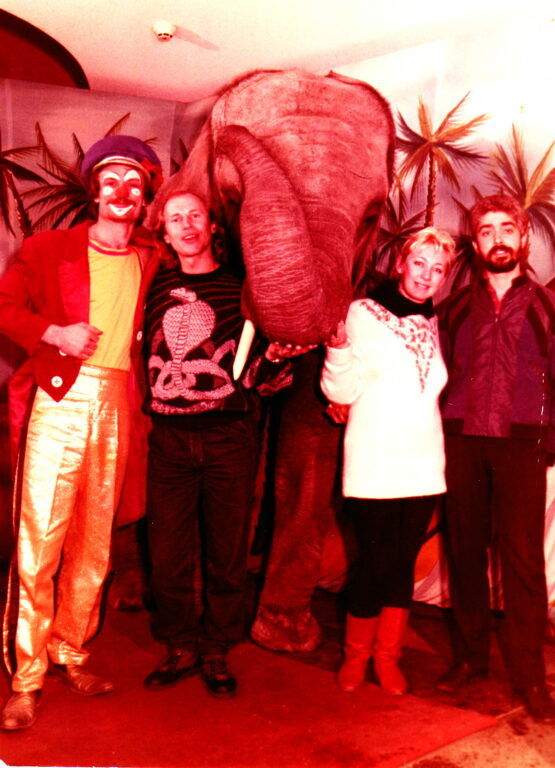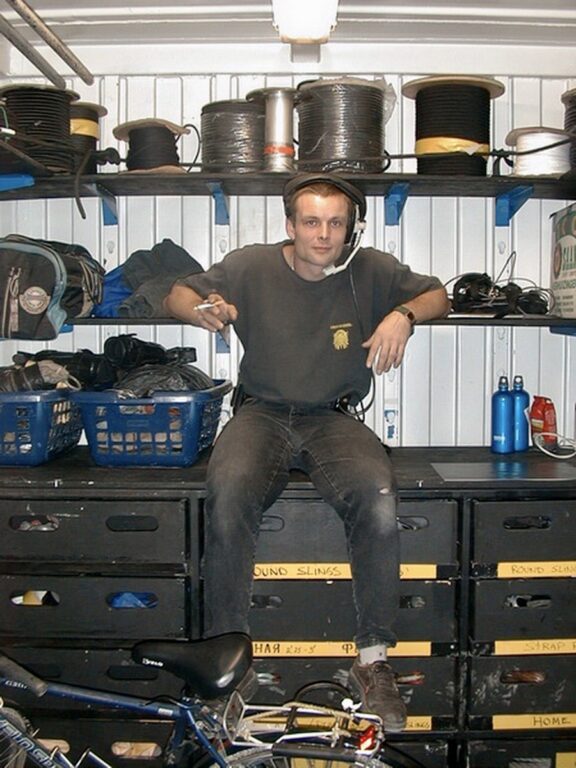
Circus has been Vladimir Antosik’s life. He has been a steady presence in the business for forty years – since 1980. His work and passion was only once interrupted – just recently, by the closing of shows due to Covid-19. Afterwards, his show life is bound to continue. During our chat, Vladimir remembers how it all began…
I started circus life as a circus technician in 1980 when I joined the Moscow State Circus.
Back then, the circus belonged to the government of the Soviet Union.

The Moscow State Circus has interesting origins and a wealth of 100 years of experience. When the Soviet Union was founded in 1917, the government looked everywhere for experienced artists to open their own circus. So, they approached every performance artist who was traveling through the Soviet Union at that time. Any kind of artist. From other countries as well.
In this way, the Moscow State Circus came into existence with a full ensemble of artists who had already made a name for themselves.
The Circus paid them good money. They offered good conditions, and they were untouchable by the KGB, etc. Even as the performers grew old, they were taken care of and well paid to become coaches.
Thus, the Russian circus quickly went from nothing to become one of the best circuses in the world.
In 1991, when Guy Laliberté was in Moscow, Cirque du Soleil needed world-class artists. Guy looked at the best ones he could find at the Moscow State Circus and hired them for his shows. If you look at the first successful shows of Cirque du Soleil, they are full of Russian acrobats.
I remember, the Moscow circus was full of traditional beliefs and traditions. Many of them were about mutual respect.
When you came to work in the morning, whoever you saw first you had to say hello to. And that person had to respond to you with the same politeness. Everyone had to greet each other. If someone caught you breaking this rule you were in big trouble.
Each circus building had its own kitchen and catering place. If you stepped in and someone was already eating, you had to say ‘bon appetit’. If you didn’t you had a problem.
It was about a culture of respect for everyone. It didn’t matter if you were the most inexperienced technician or a superstar.
A circus arena is exactly 13 meters in diameter. Do you know why?
Several hundred years ago they calculated which is the smallest stage diameter possible for a horse to be able to run as fast as possible. The diameter of a traditional circus arena is based on the needs of the horses.
As a technician if you had to go to the opposite side of the arena, you didn’t just walk through.
If you had nothing to do in the arena and they would catch you crossing the stage, you’d get the 1st warning. Then a 2nd warning if it happened again. If they would catch you a third time, they’d whip you until you bleed.
Circus is our bread. You are walking on our bread, our food. This again was about respect. About respecting the space as much as the people.
People can even die in this arena. Not just get injured. You need to respect this space.
With the Moscow State Circus, we toured a lot through Japan, too.
In some cities we did 3 shows. Sometimes, a 3-month tour ended up taking 8 months. It got prolonged, and prolonged, and prolonged…
Each tour would start in Tokyo and finish in Tokyo. In between we would be all over the place. We would even perform in villages.
One time, we even went to the southern-most island of Japan. We did just one show and everyone who lived there saw it, because it was only a few thousand people who inhabited the island.
Only this guy was allowed to hire circus artists and technicians from Russia for Japan. He had a special contract with the government of the Soviet Union.
I ended up working in Japan for 5 years, from 1991 to 1996.
During our tours with the Moscow State Circus, I had always been interested to learn Japanese. By the time the Japanese production manager offered me a job, I spoke the language pretty well.
I was lucky to be in Japan for so long. Very quickly, I had a good relationship with my Japanese team mates. I adapted fast. And I loved the local culture.
But as a tourist you don’t really see the real Japan. My local Japanese friends showed me the real Japan. They showed it to me from the inside. Took me everywhere they were going.
The production manager from our show ended up hiring 5 Russian technicians. But, due to my language skills, only I had a close relationship with the locals.
The job was tough. It was great money, but exhausting. After 8 months you would come home and look at yourself and you would find that you were just skin and bones.
Also, each time, the next date of me joining the tour would be extremely unpredictable. Sometimes, it would take them 6-8 weeks to get my visa. Other times, they would organize it really fast.
I was married to a Russian performer at the time. In 1995, the owner of the Japanese circus offered her to come work for us on two separate occasions. But she couldn’t come on each tour with us. She would get frustrated with often having to stay behind in Moscow. And with never knowing how long I would be able to stay when I was home.
At that time, Cirque du Soleil’s Saltimbanco was in Europe. One of their artists left and my wife was lucky to be offered her position.
In 1996, she managed to get me a rigging position on their tour, too. Guy Laliberté didn’t want to have a Russian technician. But my ex-wife said, “I’m leaving if you don’t hire my husband as well.” So Cirque du Soleil did end up hiring me, because they didn’t want to risk losing one of their main acts.
I joined Saltimbanco in Antwerp, in June 1996. But the show was dying. I got there just before it was shut down. I worked through to the end of the year. Beginning of 1997, we finished Saltimbanco in the Royal Albert Hall in London.
One day before we had our last performance, our technical director told me, “If you want, we are ready to have you sign a permanent contract with Cirque.”
At that time, Cirque du Soleil had their European headquarters office in Amsterdam. Danny Persha, Guy Laliberté’s right hand, worked in that office. He fought to have me permanently working for them in Europe.
These were good years. Guy Laliberté would come to Europe for every premiere. He would be present at every premiere party.
I went to Alegria and stayed for 2 years with Cirque in Europe.

Then, Saltimbanco got reincarnated in 1999. I was transferred and we premiered in Australia. It was amazing.
In 1997, we had packed our road cases, thinking the show was finished forever. Only 2 years later, we were back for a new beginning.
After Saltimbanco, I was 3 years with Quidam in Europe. Then half a year with Dralion, also in Europe.
In a way this was a good change. Because, when it was a strict separation of American and European teams, it would always mean that you couldn’t start straight away when the show arrived in Europe.
We would get 60% new performers. This would mean we would have to train first before being able to premiere on the new continent.
Visa-wise the new system wasn’t complicated either. Cirque always had special agreements with the governments of the countries it toured through, so getting the green light for Visas was no issue.
Thus, I began working with Cirque all over the world.
For a few years in between, I also worked for Dragone Entertainment.
One years ago, I went back to Cirque du Soleil. This time to China, as HOD of Rigging for their new show X – Land of Fantasy.
I love being a circus technician. I love being a rigger. Currently, I am in Hamburg with my wife, hoping the Covid-19 crisis will soon be under control. I miss my life at the circus and am already looking forward to going back to what I do best.
The Greatest Showman: Who Was The Real P. T. Barnum? 10 Historical Facts
A Brief History of Cirque du Soleil


Liam Klenk was born in Central Europe and has since lived on four continents. Liam has always been engaged in creative pursuits, ranging from photography and graphic design, to writing short stories and poetry, to working in theatre and shows. In 2016, Liam published his first book and memoir, 'Paralian'.
Read Full Profile© 2021 TheatreArtLife. All rights reserved.

Thank you so much for reading, but you have now reached your free article limit for this month.
Our contributors are currently writing more articles for you to enjoy.
To keep reading, all you have to do is become a subscriber and then you can read unlimited articles anytime.
Your investment will help us continue to ignite connections across the globe in live entertainment and build this community for industry professionals.